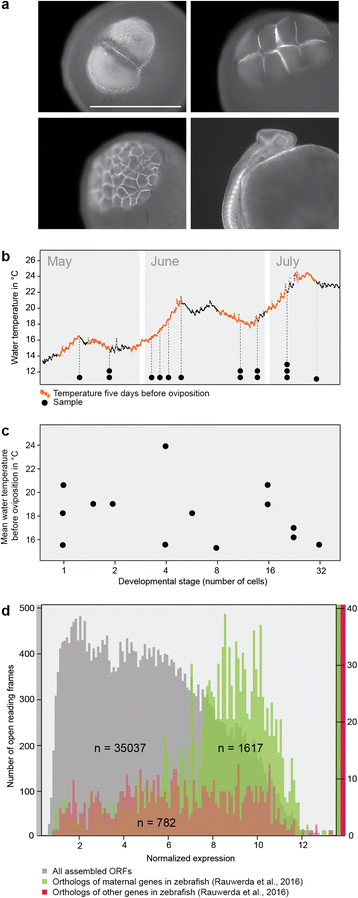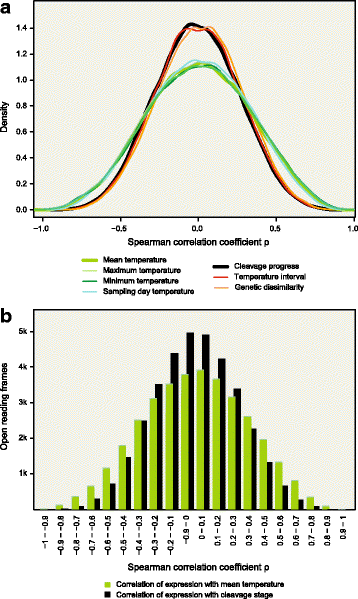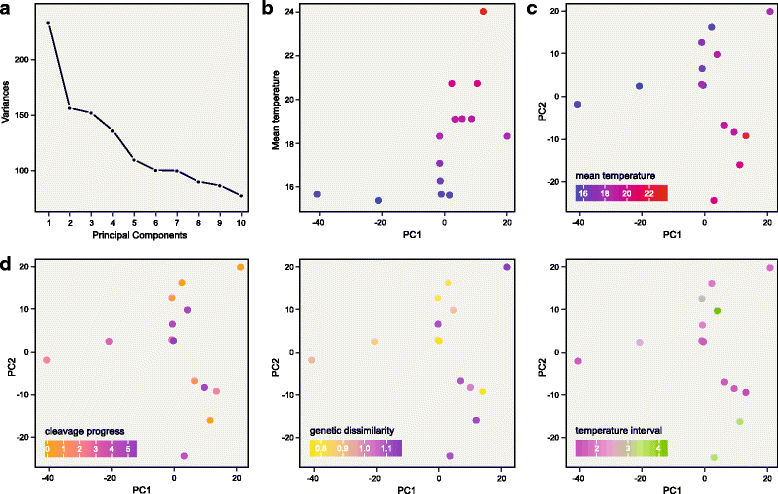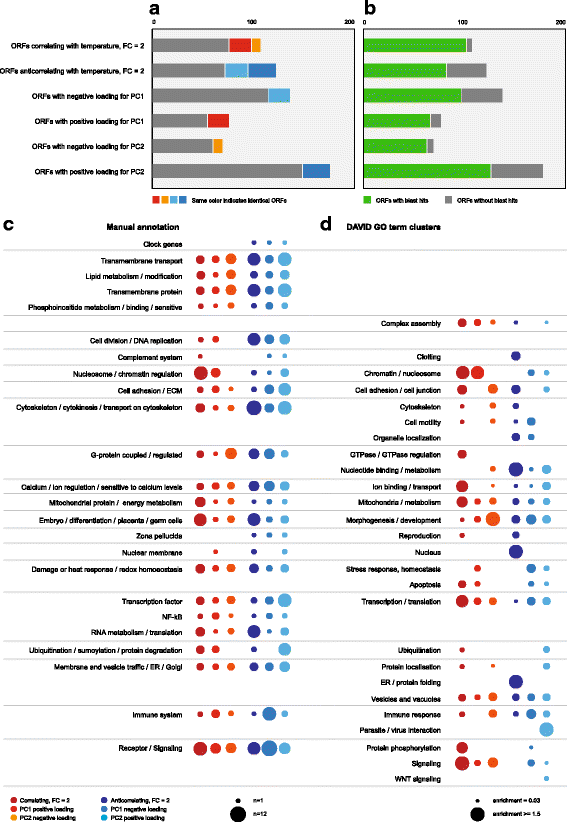RNA sequencing of early round goby embryos reveals that maternal experiences can shape the maternal RNA contribution in a wild vertebrate
- PMID: 29566669
- PMCID: PMC5863367
- DOI: 10.1186/s12862-018-1132-2
RNA sequencing of early round goby embryos reveals that maternal experiences can shape the maternal RNA contribution in a wild vertebrate
Abstract
Background: It has been proposed that non-genetic inheritance could promote species fitness. Non-genetic inheritance could allow offspring to benefit from the experience of their parents, and could advocate pre-adaptation to prevailing and potentially selective conditions. Indeed, adaptive parental effects have been modeled and observed, but the molecular mechanisms behind them are far from understood.
Results: In the present study, we investigated whether maternal RNA can carry information about environmental conditions experienced by the mother in a wild vertebrate. Maternal RNA directs the development of the early embryo in many non-mammalian vertebrates and invertebrates. However, it is not known whether vertebrate maternal RNA integrates information about the parental environment. We sequenced the maternal RNA contribution from a model that we expected to rely on parental effects: the invasive benthic fish species Neogobius melanostomus (Round Goby). We found that maternal RNA expression levels correlated with the water temperature experienced by the mother before oviposition, and identified temperature-responsive gene groups such as core nucleosome components or the microtubule cytoskeleton.
Conclusions: Our findings suggest that the maternal RNA contribution may incorporate environmental information. Maternal RNA should therefore be considered a potentially relevant pathway for non-genetic inheritance. Also, the ability of a species to integrate environmental information in the maternal RNA contribution could potentially contribute to species fitness and may also play a role in extraordinary adaptive success stories of invasive species such as the round goby.
Keywords: Neogobius melanostomus; maternal contribution; non-genetic inheritance; parental effects; short term adaptation.
Conflict of interest statement
Ethics approval
Animals were obtained with the approval of local fishery authorities under permission # 2–3–6-4-1 from the office for environment and energy Basel.
Consent for publication
Not applicable
Competing interests
The authors declare that they have no competing interests.
Publisher’s Note
Springer Nature remains neutral with regard to jurisdictional claims in published maps and institutional affiliations.
Figures




Similar articles
-
The mitochondrial genome sequences of the round goby and the sand goby reveal patterns of recent evolution in gobiid fish.BMC Genomics. 2017 Feb 16;18(1):177. doi: 10.1186/s12864-017-3550-8. BMC Genomics. 2017. PMID: 28209125 Free PMC article.
-
Environmental heterogeneity associated with European perch (Perca fluviatilis) predation on invasive round goby (Neogobius melanostomus).Mar Environ Res. 2017 Dec;132:132-139. doi: 10.1016/j.marenvres.2017.10.017. Epub 2017 Nov 2. Mar Environ Res. 2017. PMID: 29132920
-
First evidence for interspecific hybridization between invasive goby species Neogobius fluviatilis and Neogobius melanostomus (Teleostei: Gobiidae: Benthophilinae).J Fish Biol. 2013 Jun;82(6):2128-34. doi: 10.1111/jfb.12127. Epub 2013 Apr 26. J Fish Biol. 2013. PMID: 23731157
-
Twenty years of invasion: a review of round goby Neogobius melanostomus biology, spread and ecological implications.J Fish Biol. 2012 Feb;80(2):235-85. doi: 10.1111/j.1095-8649.2011.03157.x. J Fish Biol. 2012. PMID: 22268429 Review.
-
The thrifty phenotype as an adaptive maternal effect.Biol Rev Camb Philos Soc. 2007 Feb;82(1):143-72. doi: 10.1111/j.1469-185X.2006.00007.x. Biol Rev Camb Philos Soc. 2007. PMID: 17313527 Review.
Cited by
-
Egg-mediated maternal effects in a cooperatively breeding cichlid fish.Sci Rep. 2023 Jun 16;13(1):9759. doi: 10.1038/s41598-023-35550-5. Sci Rep. 2023. PMID: 37328515 Free PMC article.
-
The round goby genome provides insights into mechanisms that may facilitate biological invasions.BMC Biol. 2020 Jan 28;18(1):11. doi: 10.1186/s12915-019-0731-8. BMC Biol. 2020. PMID: 31992286 Free PMC article.
-
Maternal body condition and season influence RNA deposition in the oocytes of alfalfa leafcutting bees (Megachile rotundata).Front Genet. 2023 Jan 4;13:1064332. doi: 10.3389/fgene.2022.1064332. eCollection 2022. Front Genet. 2023. PMID: 36685934 Free PMC article.
-
Maternal age alters offspring lifespan, fitness, and lifespan extension under caloric restriction.Sci Rep. 2019 Feb 28;9(1):3138. doi: 10.1038/s41598-019-40011-z. Sci Rep. 2019. PMID: 30816287 Free PMC article.
-
Maternal mRNA input of growth and stress-response-related genes in cichlids in relation to egg size and trophic specialization.Evodevo. 2018 Dec 1;9:23. doi: 10.1186/s13227-018-0112-3. eCollection 2018. Evodevo. 2018. PMID: 30519389 Free PMC article.
References
Publication types
MeSH terms
Substances
LinkOut - more resources
Full Text Sources
Other Literature Sources

